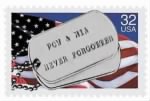he Palawan massacre occurred on 14 December 1944, during World War II, near the city of Puerto Princesa in the Philippine province of Palawan. Allied soldiers, imprisoned near the city, were killed by Imperial Japanese soldiers. In order to prevent the rescue of prisoners of war by the advancing Allies, on 14 December 1944, units of the Japanese Fourteenth Area Army (under the command of General Tomoyuki Yamashita) brought the POWs back to their own camp. An air raid warning was sounded to get the prisoners into the shelter trenches, the 150 prisoners of war at Puerto Princesa entered those trenches, and the Japanese soldiers set them on fire using barrels of gasoline. Prisoners who tried to escape the flames were shot down by machine gun fire. Others attempted to escape by climbing over a cliff that ran along one side of the trenches, but were later hunted down and killed. Only 11 men escaped the slaughter; 139 were killed.[3] Of the victims, 123 are buried in a mass grave at Jefferson Barracks National Cemetery, St Louis Missouri. The incident sparked a series of POW rescue campaigns by the US, such as the raid at Cabanatuan on January 30, 1945, the raid at Santo Tomas Internment Camp on February 3, 1945, the raid of Bilibid Prison on February 4, 1945, and raid at Los Baños on February 23, 1945. It was testimony of survivor Pfc. Eugene Nielsen that convinced the US military to embark on a campaign to save the POWs in Philippines in 1945. In 2006, Nielsen was interviewed again by Geoffrey Panos on the behalf of the University of Utah. Bones from the victims were discovered in early 1945. 16 Japanese soldiers were tried for the massacre, at Yokohama in August 1948. The Japanese personnel involved in the massacre were initially sentenced to death, but later, they were released in the general amnesty.
Timeline
There are no facts with dates. Select Add to add facts or records.









